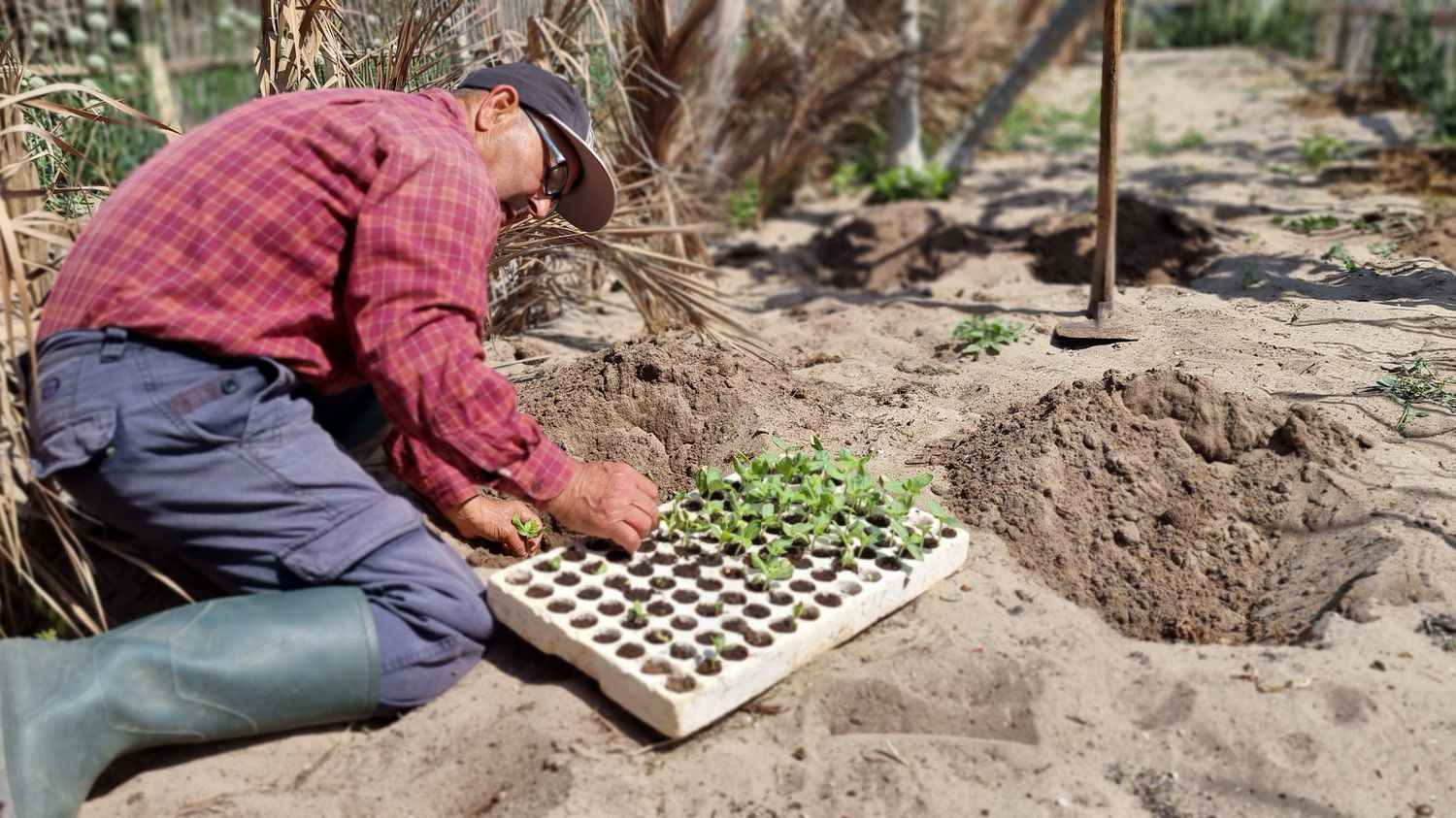In Tunisia, in Ghar El Melh in the north of the country, around forty farmers are trying to preserve agriculture ramlialso called gattayaa traditional sand farming technique whose method dates back to the influence of the Andalusians in the country between the 16th and 17th centuries.
the ramli is a very old method that relies above all on a layer of moist, intermediate and fairly solid sand, which has been preserved over the centuries. This intermediate layer allows a very special natural phenomenon: when the rainwater runs off the hills and arrives towards the salt water of the nearby lagoon, thanks to a flow system also fed by the tides, the fresh water will remain above and feed the roots of fruits and vegetables planted in the sandy layer.
It’s as if the sea water somehow helps the fresh water to hydrate and nourish the plants. It is a very fragile and unique system in the world, as explained by Ali Garci, one of the farmers who still practices this method: “This is the secret that this agriculture possesses and that cannot be found anywhere in the world. This is why the Gattaya region in Ghar El Melh has been certified Sipam. Sipam is the abbreviation of ‘ingenious system of world agricultural heritage’.” Sipam is an appellation managed by the Food and Agriculture Organization of the United Nations (FAO) and consecrates the ramli
Today, Ali has many problems growing his fruits and vegetables. He says his potato harvest was not good. They turned yellow because they couldn’t be irrigated enough. Clumps of sand have blocked the natural corridor between the lagoon near Ali’s land and the sea, which prevents the flow system from functioning properly. Rising waters also threaten its land.

Ali still has many other problems: “The wind blows continuously, it is the fourth successive year that we lack rain. Before, there were no buildings. Now, by the sea, buildings are being built on fertile land.“
“Our product is a natural product, which has a specific taste, so I always make an SOS appeal to save this concept of agriculture.”
Ali Garci, farmerat franceinfo
Agriculture on sand requires constant attention with reduced means since you cannot use tractors or other tools that are too aggressive for sandy soil.
Does this agriculture have a chance of surviving? Yes, because farmers like Ali are fighting to keep it alive but also to pass it on to younger generations. Today, there are still around forty farmers practicing the method ramli over nearly 200 hectares.
